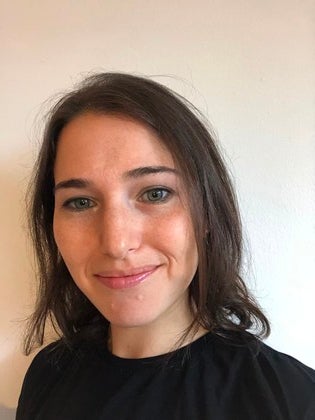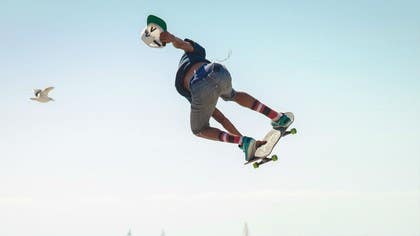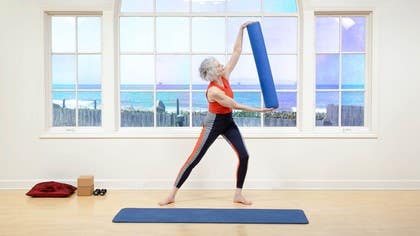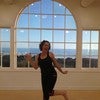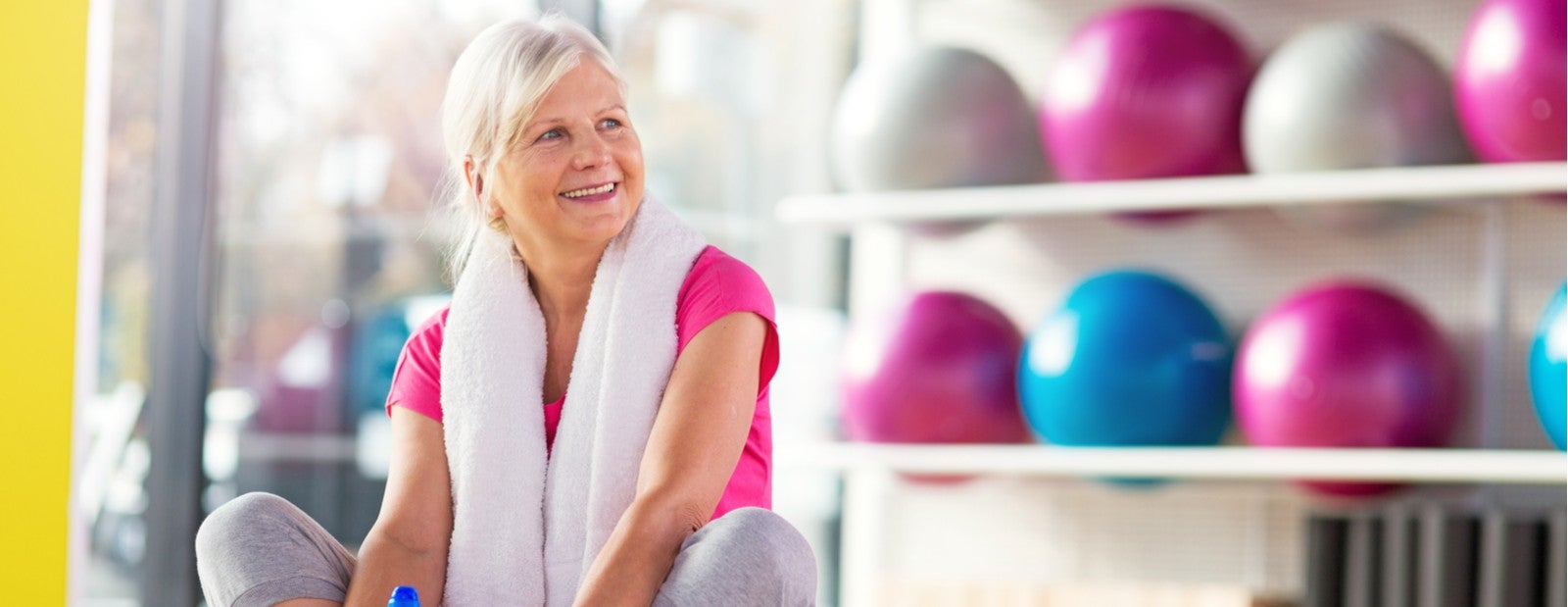
How to Age, Actively
Although there are many perks of turning 50 - you’re probably feeling a lot freer and more fearless for one - it’s an undeniable truth that with the “Big 5-0” comes a series of changes in the body. By now, your joints and spine have experienced a degree of degeneration. Balance and flexibility are beginning to become more of an issue. Maybe you've been diagnosed with osteoporosis, osteopenia or arthritis. Or, maybe you simply don’t have the strength and endurance you once had.
Here's the good news: exercise can be extremely beneficial in helping you traverse these (normal) issues. In fact, there’s an entire category in the fitness and wellness sphere dedicated to the 50+ set called healthy or active aging. “I think the idea of active aging comes from the fact that in the last 10 to 20 years, research has really proven that staying physically active through your life, including in your older years, is a great benefit to your overall wellness,” explains second-generation Pilates teacher Cara Reeser, a worldwide educator and the owner of Pilates Aligned in Denver, CO. “Exercise helps with diabetes, pain, mood, heart disease and on and on. We finally have a lot of support from the medical industry that staying active as you age is super important to well-being.”
While individuals over a certain age can get lumped into one category, it’s important to note that there can be a huge variation when it comes to a person’s specific needs and capabilities. “Genetics, history, condition, and lifestyle play a factor in aging. And someone who has not exercised in their younger years will feel the effects of the aging process earlier than someone who has been active their whole life,” Cara says. “There are plenty of people over the age of 50 that are fit, free of pain and just trying to keep their mobility. But there are also those with physical limitations that need to go about exercise in a different way.
The goal is to coach individuals in the aging process and to find ways to increase their fitness.”
Of course, not all exercise is created equal. Pilates might just be the best thing for the aging body, according to Cara. “The Pilates system is asking you to start where you are, no matter your condition. We’re using breath coaching, we’re using an inner sensitivity to our body, so we’re aware of our limitations and coming up with strategies. Pilates offers that opportunity in a way that no other exercise modality offers.” Plus, you can start practicing at any age; Cara has worked with clients in their mid-90s!
Need more motivation to take up Pilates? Let us count the ways in which the method can help you look and feel great at any age.
1. Pilates teachers know their stuff - and can help instill confidence.
A big part of the Pilates teacher training process includes learning about the body’s anatomy and developing a keen understanding of what happens as the body ages. “Pilates teachers are movement coaches that are highly educated or have access to highly educated trainers who can help,” Cara says.
Best of all: “They can change the mind-set for the aging adult that you don’t have to be afraid. They can educate people and say things like, ‘Don’t get thrown under the bus because you have a torn meniscus, it’s more common than you think.’ ‘Of course, you have disc degeneration. It’s a sign of a life well-lived. We can all still work out, load those joints, be flexible and kick ass, no matter what.’”
2. The system is designed for seamless progression.
If you haven’t exercised in a while—or ever!—don’t worry. There are plenty of Pilates exercises for beginners. “One of the things that happens when you learn Pilates, when taught well, is that you’ve been given a graded exposure to new movements, you’re going from basic skills up,” Cara explains. “There’s plenty of support within the brilliant system that allows clients to build into their skill set. You can start small on the Cadillac with well-supported movements, and then you keep expanding from there.”
3. The method can be highly personalized.
For those that can afford private sessions, they’re the way to go, Cara says. “If you’re a person with disabilities, disease or pain, a private Pilates practice allows you to navigate those options in a one-on-one setting. There are so many options—e.g., the diversity of the equipment, the load, the range of motion, targeting certain areas. If the practitioner is qualified, a really rigorous program can be designed to allow a person to get stronger and more flexible and achieve better balance without exacerbating any of the symptoms.”
First-generation teacher Kathy Grant summed it up nicely. “She always said that one size doesn’t fit all. Pilates is here to customize, to create options.”
4. It helps you learn and get comfortable in your “new” body.
If you’re dealing with a newfound age-related issue, you might feel anxious about working out at first. After all, the last thing you want to do it to exacerbate your condition or feel like you’re wasting your time while you exercise.
“The wonderful thing about the Pilates system itself is that it allows individuals to do a lot of personal discovery because it is a mind/body training,” Cara adds. “You get to know yourself, and then open the doors, whereas in, say, a spinning class, you’d get discouraged and want to pull out. You’re being asked in the Pilates method to go in and get familiar with your body, with all its strengths and with all its limitations, and to find a way to thrive as the environment changes. And it changes all the time.”
5. There are Pilates classes specifically designed for active aging.
At Cara’s studio, “We’re focusing much more on extension protocol for older adults because what we know about osteoporosis and osteopenia is that loaded flexion is risky. Increasing extension, incorporating standing work and doing weight-bearing exercises not in flexion is proven to be better for those conditions.” Another big goal of these classes: to improve balance and confidence.
Want to try Pilates at home? Pilates Anytime offers a variety of Pilates videos with tips, tutorials and exercises for the active ager.
6. It’s safe for people experiencing age-related aches and pain.
“The current research on working with people with pain is very strong when working with movement and load,” Cara says. “The Pilates studio is the perfect place to exercise because you can move, load and navigate with your personal condition without hurting the tissue, while still pushing the envelope a little.
“When people have lost mobility, when they have pain, their instinct is to stop moving. The Pilates studio is a place where we can create really safe, really smart strategies to they can achieve their goals, whether that means travel, playing with grandchildren, etc. We can get them adjusted to the changes in their body, be positive about those changes and keep them strong.”
7. It will help prepare the body for “real” life.
The ultimate goal of Pilates? We do all of this work inside the studio to help you live your best life outside of it.
Cara agrees. “Pilates is about creating an environment, where an individual takes a risk and walks into a studio and confronts the body. The environment sees and meets that individual where they are. The class size is small, the teachers are highly educated. The studio can be the bridge between physical therapy and really getting back to getting empowered by exercises. It’s about that transition from being a patient to a thriving individual.”
8. It’s foolproof!
“Mr. Pilates always said that his work is from the unexpected. The practice itself offers the ability to navigate and be capable, no matter what arises. It’s a way in which we become adaptable, resilient and familiar with the changes going on in our body—instead of resisting them.”
Bottom line: “It’s about opening doors—not closing them. You should leave, and feel good and confident. It allows an aging person an opportunity to be successful, and that success will make them want to challenge themselves.”
Comments
You need to be a subscriber to post a comment.
Please Log In or Create an Account to start your free trial.
